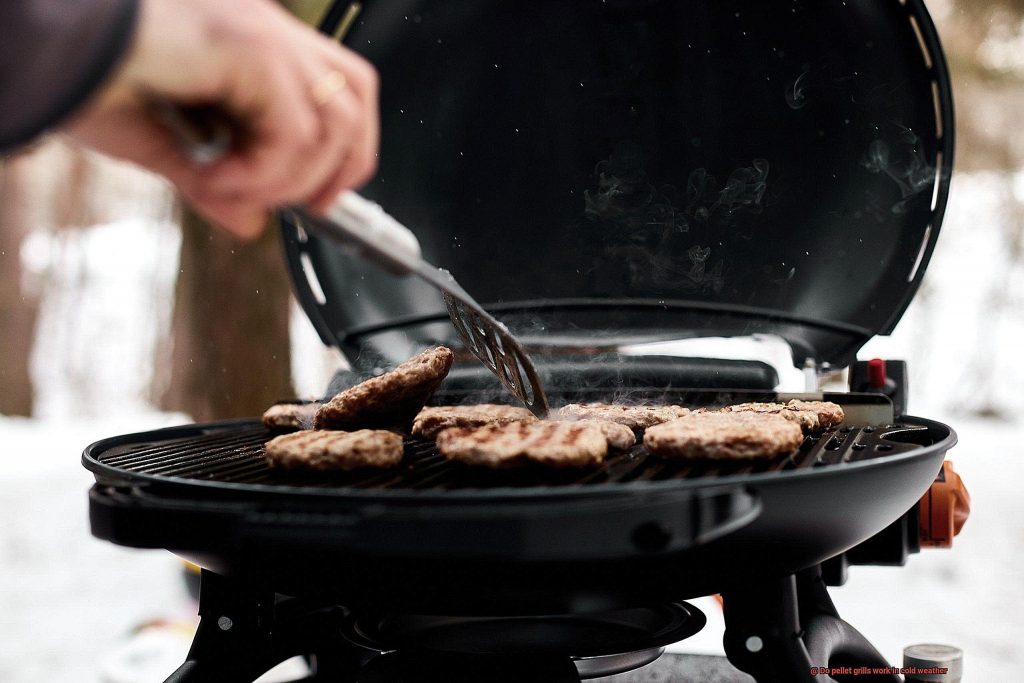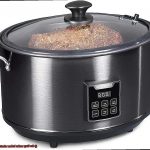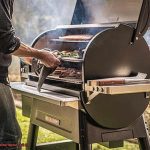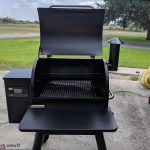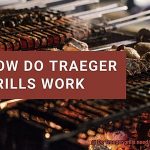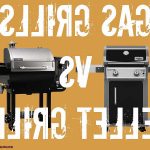Winter is upon us, and what better way to warm up than with a steaming plate of barbequed meat? But before you fire up your pellet grill, you may be wondering: can it handle the cold weather? Pellet grills are a popular choice for outdoor cooking enthusiasts for their versatility, ease of use, and consistent heat and smoke. However, when the temperature drops, can they still deliver the same performance?
In this blog post, we’ll dive into the question: Do pellet grills work in cold weather? We’ll break down the technical aspects of how pellet grills operate and what happens to them when the mercury plummets. Additionally, we’ll discuss several factors that can impact your pellet grill’s performance in chilly conditions such as fuel consumption, pellet quality, and even the type of meat you’re cooking.
But wait. There’s more. We’ll also share some tried-and-true tips to help you ensure your pellet grill works flawlessly even in sub-zero temperatures. From installing a thermal blanket to enhance insulation to adjusting temperature settings according to weather conditions and preheating your grill before usage – we’ve got you covered.
So, don’t let winter get in the way of your love for barbeque. Get ready to savor delicious smoked meats all year round as we explore: Do pellet grills work in cold weather?
Contents
Factors to Consider When Using Pellet Grills in Cold Weather
They provide a convenient and unique way to prepare delicious grilled meals with ease. However, when the weather gets colder, some grill enthusiasts may question whether their pellet grills can still perform at their best. The good news is that pellet grills can work in cold weather conditions, but there are essential factors to consider.
First and foremost, grill enthusiasts need to understand that colder temperatures can affect the performance of their pellet grills. The efficiency of the grills can be impacted by cold weather, resulting in longer cooking times and increased fuel consumption. As such, it is crucial to take into account the following factors:
- Pellet Type: In colder temperatures, using hardwood pellets that have lower moisture content is advisable. Such pellets produce less ash that clogs the grill’s auger and cause issues with temperature regulation.
- Location: It is best to place the grill in an area that is sheltered from wind and other elements. This helps maintain consistent temperatures inside the grill, which is vital for achieving perfectly cooked food.
- Insulation: Grills with better insulation are more efficient at retaining heat, which can be especially important in colder weather conditions. This also helps reduce fuel consumption and cooking time.
- Temperature Control: In colder temperatures, the grill may take longer to heat up and maintain its desired temperature. Investing in a high-quality pellet grill with advanced temperature control features such as a PID controller is essential. These controllers regulate the temperature within a few degrees, ensuring consistent heat even in cold weather conditions.
- Monitoring: Lastly, monitoring the grill’s temperature throughout the cooking process is crucial in colder temperatures. Regularly checking ensures that food is cooked thoroughly and evenly.
It’s also worth noting that frozen pellets can lead to inconsistent heat and potentially damage the grill. To prevent this from happening, it’s essential to store pellets in a dry, warm location. Keeping them in airtight containers or bags and avoiding exposure to moisture is crucial. Warming up the pellets before use by placing them in a warm area or near a heat source is also recommended.
Tips for Storing Pellets in Cold Weather
Pellet grilling is a great way to cook up some delicious meals, even in the coldest of weather. But to keep your pellets in top condition, you need to take some extra steps when storing them during the winter months. Here are five tips for storing pellets in cold weather.
Keep Pellets Dry
Moisture is the nemesis of pellets. It can cause them to expand and break down, rendering them unusable. To keep your pellets dry, store them in an airtight container or bag, and make sure they’re kept off the ground to avoid moisture seeping in from below.
Maintain a Consistent Temperature
Extreme cold can make pellets brittle and difficult to use. Store your pellets in an area where the temperature is consistently above freezing, ideally between 40-70 degrees Fahrenheit. If necessary, consider using a heated storage container or insulation.
Keep Pellets Off the Ground
Moisture from the ground can seep into bags and cause damage. Stack your bags on pallets or shelves, or use a storage container specifically designed for pellet storage.
Check Pellet Quality
Improperly stored pellets may have degraded in quality, leading to inconsistent heat output and potential damage to your grill. Before using any stored pellets, inspect them for signs of deterioration such as swelling or discoloration. It’s also helpful to do a burn test with a small amount of pellets before cooking.
Rotate Stock and Check Expiration Dates
Pellets don’t technically expire but can lose their effectiveness over time. Make sure to rotate your stock so that older bags are used first, and replace any bags that have expired or been damaged.
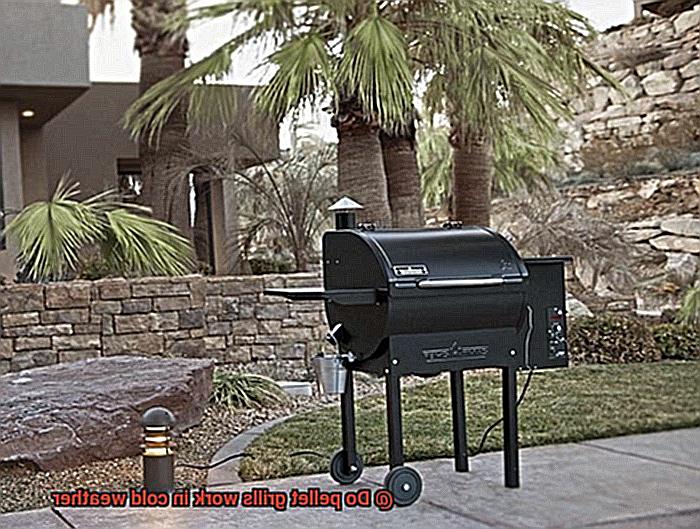
Impact of Cold Weather on Grill Temperature Control Systems
Pellet grills rely on an automated system that controls the amount of fuel and air that enters the grill to maintain a consistent temperature. However, when the temperature drops below freezing, this system can be impacted in several ways.
One of the primary concerns is pellet ignition. In cold temperatures, pellets can become more difficult to ignite, resulting in a slower start-up time and potentially uneven heating throughout the grill. Additionally, pellets may burn at a slower rate in colder temperatures, which can impact cooking time and temperature control.
Another issue that arises in cold weather is the functioning of temperature sensors and probes. These sensors are designed to measure the internal temperature of the grill and adjust the fuel and air supply accordingly. However, if they are exposed to extreme cold, they may not work effectively, resulting in inaccurate temperature readings and poor temperature control.
To combat these issues, manufacturers have started designing pellet grills with cold weather features such as insulated lids and chambers, larger hoppers for storing pellets, and improved temperature control systems that are better equipped to handle extreme temperatures. Using high-quality pellets that are specifically designed for use in cold weather conditions can also help improve performance.
Benefits of Investing in a High-Quality Pellet Grill with Advanced Temperature Control Features
This is where investing in a high-quality pellet grill with advanced temperature control features comes into play. Not only will it help you overcome the challenges of grilling in colder temperatures, but it will also provide you with a range of benefits that enhance your overall grilling experience.
Firstly, a high-quality pellet grill with advanced temperature control features allows you to maintain consistent temperatures even in cold weather conditions. No more worrying about slower ignition, uneven heating, or inaccurate temperature readings. The advanced temperature control system equipped in these grills regulates the temperature and ensures that it stays at the desired level, making it easier for you to cook your favorite foods to perfection.
Secondly, the insulation features in high-quality pellet grills keep the heat inside the grill, even in colder temperatures. This means you won’t have to worry about losing heat or constantly adjusting the temperature settings. You can sit back, relax and enjoy your grilled food without having to brave the chilly weather outside.
Lastly, investing in a pellet grill with advanced temperature control features also allows you to cook a wider variety of foods with precision. With precise temperature control, you can cook everything from low and slow smoked meats to high-temperature sears on steaks and burgers. This variety of options means you can experiment with new recipes and create delicious meals for your family and friends.
Strategies for Maintaining Optimal Performance in Cold Weather Conditions
Winter weather may be setting in, but that doesn’t mean you have to put away your grill. With the right strategies, you can maintain optimal performance of your pellet grill even in cold weather conditions. Here are some tips to help you keep on grilling:
- Keep your grill covered when not in use: This is one of the most important strategies for maintaining optimal performance. By keeping your grill covered, you can prevent any moisture from getting inside and affecting its performance. It also helps to keep the temperature inside the grill consistent, which is important for achieving perfectly cooked food.
- Use high-quality pellets: Make sure you are using pellets specifically designed for cold weather conditions. These pellets have a higher percentage of hardwood and less filler, which helps them burn more efficiently in colder temperatures. Using low-quality pellets can lead to inconsistent heating and poor performance, especially in cold weather.
- Regularly clean your grill: Cold weather can cause moisture to accumulate, leading to rust and other issues if not properly maintained. Regular cleaning of your grill, especially the burn pot and auger, ensures that it operates at its best and prevents any potential issues from arising.
- Monitor temperature closely: Pellet grills rely on electricity to operate, and extreme cold temperatures can affect the efficiency of the heating element. It may be necessary to adjust the temperature settings slightly to account for these changes in efficiency.
Challenges Associated with Using Pellet Grills in Extremely Cold Temperatures
The biggest challenge is maintaining a consistent temperature, which is critical to achieving the desired quality of your food. Pellet grills rely on an electric auger to transport pellets from the hopper to the firepot, and if pellets get too cold or wet, they may not feed properly. This results in fluctuating temperatures that can ruin your food. To avoid this issue, consider investing in high-quality pellets designed explicitly for cold weather.
Apart from inconsistent temperature, increased fuel consumption is another challenge associated with using pellet grills in cold weather. The grill will require more pellets than usual to maintain the desired temperature because it has to work harder in colder conditions. You may have to stock up on more pellets than you would normally need, which can quickly add up and be costly.
Besides, extreme cold temperatures can also impact the grill’s electronics’ performance, leading to battery drainage and malfunctioning displays. To mitigate this issue, keep extra batteries handy and consider investing in a thermal blanket that helps maintain temperature even in extremely cold temperatures.
The last challenge worth mentioning is that extreme cold temperatures can affect the quality of your food. Meat takes longer to cook and may not turn out as tender or juicy as it would in milder weather. Wind and snow could also impact the cooking process by affecting airflow and heat distribution.
To conquer these challenges, invest in a high-quality pellet grill cover that protects against wind and snow while using a thermal blanket to maintain temperature. Keep extra batteries on hand for electronic components. By paying attention to these details, you can still enjoy mouth-watering grilled meals even when the temperature drops below freezing.
How to Troubleshoot Common Issues with Pellet Grills in Cold Weather
From uneven heating to longer cooking times, there are a few common issues that can arise. But fear not – with some troubleshooting techniques, you can easily overcome these obstacles and continue grilling all year round.
One of the most common issues is poor pellet combustion in cold temperatures. This can result in inconsistent heating and longer cooking times. To address this issue, it’s crucial to store your pellets in a dry and warm location before use. Moisture in the pellets can cause clumping, leading to poor combustion. Additionally, consider using high-quality pellets specifically designed for colder temperatures. Finally, increase the temperature setting on the grill to compensate for the colder ambient temperature.
Another issue that may occur is difficulty maintaining consistent temperatures inside the grill. This may be caused by cold air drafts or a lack of insulation around the grill. To address this issue, place your grill in a sheltered area away from wind and drafts. Adding insulation around the grill may also help to maintain more consistent temperatures. An insulated blanket or jacket can also be used to cover the grill and help maintain heat.
In colder temperatures, pellet grills may take longer to preheat than they would in warmer weather conditions. This is because the grill needs to work harder to heat up and maintain temperatures in colder conditions. To address this issue, preheat the grill for longer than usual before beginning cooking. This will allow the grill to reach its desired temperature before adding food, ensuring that cooking times are not significantly prolonged.
Lastly, it’s important to note that electronic components on your grill may be affected by colder temperatures. If you notice any issues with the control panel or other features, keep your grill covered when not in use and bring any sensitive components indoors if possible.
nq8MbWSp-zo” >
Conclusion
In conclusion, don’t let the cold weather stop you from enjoying delicious grilled meals with your pellet grill. While there are some challenges to consider, such as longer cooking times and increased fuel consumption, taking a few simple steps can help ensure optimal performance.
Firstly, make sure to use hardwood pellets with lower moisture content and store them properly in a dry and consistent temperature environment. Placing the grill in a sheltered area away from wind and drafts is also recommended.
Investing in a high-quality pellet grill with advanced temperature control features can further enhance your grilling experience. And monitoring the grill’s temperature throughout the cooking process ensures that your food is cooked to perfection every time.
Cleaning the grill regularly is essential for maintaining its effectiveness, especially in extremely cold temperatures. Troubleshooting common issues such as poor pellet combustion or difficulty maintaining consistent temperatures can also help overcome any challenges associated with using pellet grills in colder weather conditions.
With these tips in mind, you’ll be able to enjoy mouth-watering grilled meals all year round.

